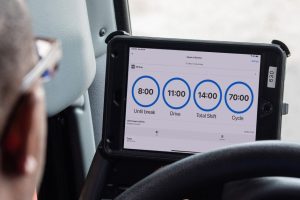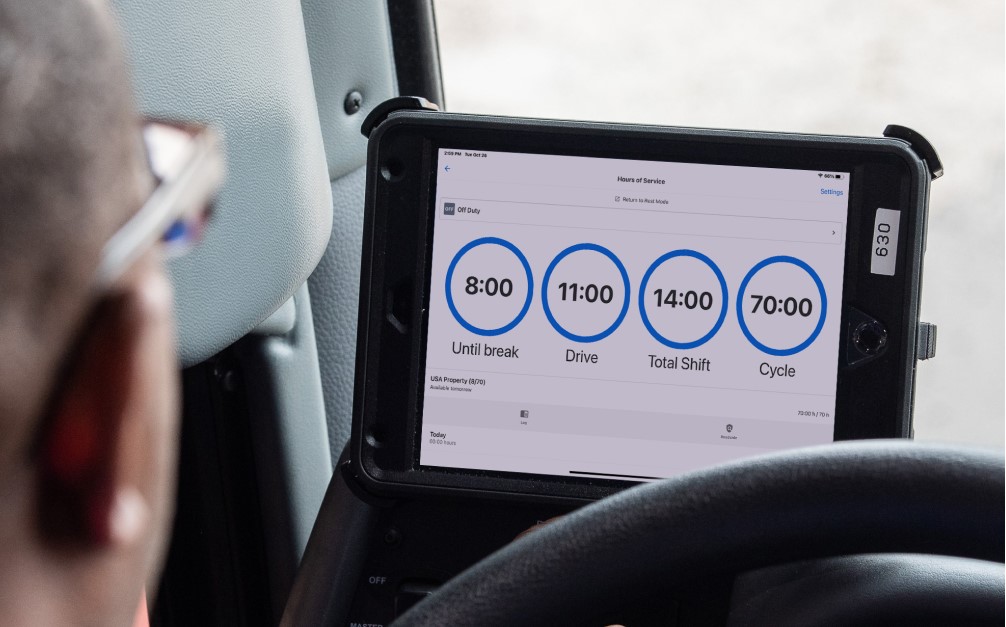Electronic Logging Devices (ELDs) are a vital part of the trucking industry in the United States, especially with federal regulations aimed at improving safety and ensuring drivers comply with Hours of Service (HOS) rules. ELDs are designed to automatically record a driver’s working hours, providing a digital log that cannot be easily tampered with. In this article, we’ll explore what ELDs are, why they matter for truckers, and what are some of the best options available on the American market today.
What is an ELD?
An Electronic Logging Device (ELD) is a piece of technology that automatically records a trucker’s driving hours and other essential data, such as start and end times, rest periods, and vehicle movement. These devices sync with a vehicle’s engine to capture driving activity and ensure compliance with the Federal Motor Carrier Safety Administration (FMCSA) regulations. ELDs help eliminate the need for manual logbooks, which were prone to errors and sometimes falsification.
The primary goal of ELDs is to promote safety on the roads by reducing driver fatigue. Fatigue is one of the leading causes of accidents in the trucking industry, and ELDs are a key tool in preventing these incidents. Since December 2017, the FMCSA has mandated ELD use for most commercial motor vehicles that require a CDL (Commercial Driver’s License), and this regulation continues to be enforced.
Why are ELDs Important?
- Regulatory Compliance: The FMCSA requires trucking companies to use ELDs to monitor drivers’ Hours of Service (HOS). These rules limit the number of hours a driver can be on the road without adequate rest, ensuring that drivers aren’t driving while fatigued. Failure to comply can result in hefty fines, and in some cases, the grounding of the vehicle until the issue is resolved.
- Improved Safety: ELDs help reduce accidents caused by drowsy driving. By ensuring drivers stick to their legal driving and rest hours, the risk of fatigue-related crashes is minimized. According to FMCSA studies, the introduction of ELDs has resulted in a significant reduction in crashes caused by driver fatigue.
- Automation and Convenience: ELDs automate the process of recording driving hours. Drivers no longer have to manually log their hours, which reduces the chance of errors or falsification. This automation helps companies track compliance in real time, improving overall efficiency.
- Efficient Fleet Management: For fleet owners and managers, ELDs provide an easier way to monitor driver behavior and ensure that the fleet is operating within legal hours. With ELD data, dispatchers can schedule routes more effectively and avoid violations that could result in fines or legal trouble.
What Are the Best ELD Options on the U.S. Market?
With so many options available, selecting the right ELD can be tricky. The best ELD for your operation depends on your fleet size, budget, and the specific features you need. Below are some of the most popular ELDs used in the U.S. trucking industry today:
1. Motive (formerly KeepTruckin)
Motive is one of the leading ELD providers in the U.S. trucking industry. Their platform offers a user-friendly mobile app and easy-to-install hardware, which is compatible with both Android and iOS devices. KeepTruckin is known for its affordability and reliability, with a subscription cost of around $400 per year per vehicle. The system also provides real-time tracking and reports, helping fleet managers monitor driver behavior and ensure compliance.
Key Features:
- User-friendly mobile app for drivers
- Real-time GPS tracking
- Integrated with dash cams for added security
- Affordable pricing for smaller fleets
2. Samsara ELD
Samsara is another top choice for fleets looking for a comprehensive fleet management solution. Samsara’s ELDs offer advanced features such as real-time GPS tracking, engine diagnostics, and driver safety scoring. Samsara is known for its cloud-based platform, which provides in-depth analytics and reporting. This ELD is best suited for companies that need more than just basic HOS tracking but also want to monitor vehicle health and driver performance.
Key Features:
- Real-time GPS tracking and fleet analytics
- Vehicle health and diagnostics
- Integration with cameras for safety monitoring
- Suitable for larger fleets with advanced needs
3. Geotab ELD
Geotab is a well-established name in the telematics industry. Their ELD system is known for being highly customizable and scalable, making it a good option for larger fleets. Geotab’s ELD integrates with its broader fleet management platform, which includes features like maintenance tracking, fuel consumption monitoring, and driver performance reports. For companies looking for a more comprehensive fleet management tool, Geotab is a solid option.
Key Features:
- Scalable and customizable for large fleets
- Comprehensive fleet management features
- Integration with fuel management and maintenance tools
- Detailed reporting and analytics
4. Rand McNally ELD
Rand McNally is one of the most recognized names in the trucking industry, offering a range of navigation and fleet management products. Their ELD device offers seamless integration with Rand McNally’s fleet management tools, including GPS navigation, route planning, and vehicle tracking. The device is easy to install and provides a simple interface for drivers, which is ideal for smaller fleets or owner-operators who prefer a straightforward solution.
Key Features:
- Simple interface for easy use
- Integration with Rand McNally’s GPS and routing tools
- Reliable and affordable for smaller fleets
- Comprehensive customer support
5. Fleet Complete ELD
Fleet Complete offers an ELD solution that’s particularly useful for companies that need an all-in-one fleet management system. Fleet Complete’s ELD offers features like real-time tracking, automated reporting, and advanced maintenance scheduling. It’s a versatile solution that can scale from small businesses to larger fleets, making it a good choice for a variety of companies.
Key Features:
- Real-time GPS tracking and driver monitoring
- Advanced maintenance scheduling tools
- Easy-to-use mobile app for drivers and fleet managers
- Affordable pricing for growing fleets
Key Considerations When Choosing an ELD
- Cost: ELD pricing can vary significantly depending on the features offered. Basic models may cost around $300-$400 per year, while more advanced systems with comprehensive fleet management tools can cost upwards of $1,000 per year per vehicle. Consider your budget and the features that best suit your business needs.
- Features and Functionality: Consider what you need beyond basic Hours of Service tracking. Do you need real-time GPS tracking? Maintenance monitoring? Integration with your fleet management software? Make sure the ELD you choose has the functionality that meets your operational needs.
- Ease of Use: The user interface should be intuitive for both drivers and fleet managers. A complicated system can create unnecessary stress for drivers, leading to errors and possible non-compliance.
- Compliance and Support: Ensure the ELD you select is FMCSA-compliant and provides regular software updates to keep up with regulatory changes. Good customer support is also important, as technical issues can disrupt your operations.
Conclusion
ELDs are a critical tool for ensuring safety and regulatory compliance in the U.S. trucking industry. With numerous options available, it’s important to choose an ELD that fits your business’s specific needs, whether you’re a small owner-operator or managing a large fleet. From affordability to advanced fleet management features, the ELD you choose can greatly impact your operation’s efficiency and safety.
If you haven’t yet implemented an ELD or are considering upgrading your current system, the devices mentioned above offer reliable, compliant, and efficient solutions for tracking working hours and improving fleet operations. Make sure to carefully evaluate each option based on your unique requirements, and stay up-to-date with any regulatory changes to remain compliant with the FMCSA.









